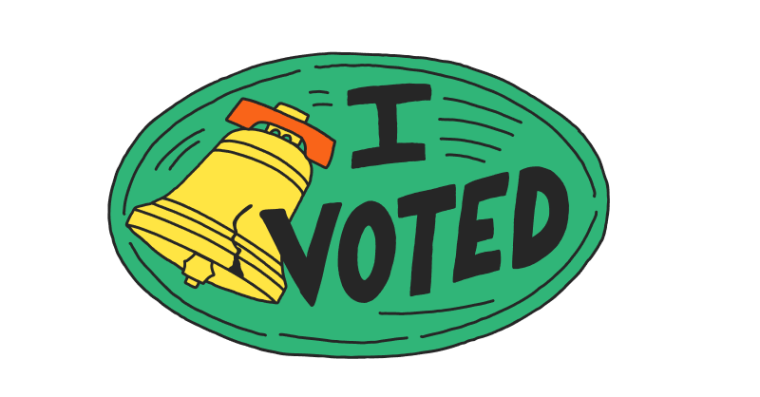Election officials — and reporters like me — have spent years explaining that voter fraud is incredibly rare. There aren’t millions of noncitizens registering and casting ballots. Voter impersonation is extremely uncommon. And there’s no legion of dead voters.

We know that because voting systems are designed with checks and balances to make it pretty hard to cheat. But most of that isn’t obvious or even visible to voters.
So with false claims of voter fraud already swirling ahead of November’s pivotal election, I’m here to walk you through the basics of the voting systems in three key battleground states — Georgia, Arizona and Pennsylvania — and how four essential elements of our election system prevent widespread voter fraud.

Getting on the voter roll

Georgia asks for quite a bit of information to register as a voter: name, address, date of birth and either the number on your driver’s license or state ID if you have one, or the last four digits of your Social Security number if you don’t. Sign the form swearing — under penalty of perjury — that you’re a citizen and eligible to vote, and you’re good to go.

Election officials will then check your information against government databases, which typically verify your identity and citizenship. If officials can’t find corroborating information, you’ll be asked to prove your citizenship with a passport, birth certificate, naturalization certificate or similar document before you are fully registered to vote.

Staying on the roll

Georgia checks its voter rolls against lists of people who have died or been convicted of a felony, while also routinely checking in with voters who change their address with the U.S. Postal Service or cancel their Georgia driver’s license.
They also use the interstate Electronic Registration Information Center (ERIC) to find voters who die elsewhere, or move and register out of state.
Casting a ballot
You must show a photo ID to vote. If you choose to vote by mail, you’ll have to request a ballot with your driver’s license number or a photocopy of your photo ID.

All ballots are fed into tabulators to be tallied, totals are reconciled (ensuring that there are an equal number of both ballots cast and voters who voted) and the results are driven to the county election office.
checking the count

After the results are tallied, the state conducts a risk-limiting audit by physically counting randomly selected batches of ballots and hand-counting them. The state also runs all the ballot images through a computer program that tallies the results.


Getting on the voter roll
Arizona needs your name, address, date of birth, signature and driver’s license number if you have one, or the last four digits of your Social Security number if you don’t. Without those, you’ll have to show more ID to vote.
You’ll have to swear under penalty of perjury that you’re a citizen who is eligible to vote, too.
Arizona also requires those who want to vote in state elections to show documentary proof of citizenship. That means a passport, birth certificate, naturalization certificate or something similar.


Election officials then check your information against the state’s Department of Transportation data or the Social Security Administration to verify your identity. They’ll send nonforwardable mail to your address to verify that it is accurate, too. If the mail is returned to them, you’ll have to update your address before you vote.
Staying on the roll
Election officials use government databases and the interstate database ERIC to look for voters who have died or moved; they also look at jury duty data to look for voters who say they’ve moved or, rarely, say they aren’t a citizen.
Casting a ballot

If you want to vote by mail, you will need to request a ballot by filling out a form with your signature, which will be checked along with your date of birth. You can also call in your request for a mail ballot, and election officials will ask you questions to verify your identity.
Your mail ballot will be verified by making sure the signature on the ballot matches the signature on file.
If you want to vote in person, you can vote early or on Election Day. Either way, you’ll need to show your ID at the polling site. That’s usually a driver’s license, but you can bring other identifying documents — like a car registration and a utility bill — to prove your identity and residency.

Ballots are then tabulated — either on site or at a county election office — and uploaded to the state through a secure system.
checking the count
After the election, the machines are again tested for accuracy, and a statistically significant share of ballots is counted by hand.



Getting on the voter roll
Pennsylvania allows people to register online, by mail or in person at a local election office or certain state agencies. You’ll have to provide your name, date of birth, address and driver’s license number or the last four digits of your Social Security number. Sign the form swearing — under penalty of perjury — that you’re a citizen and eligible to vote, and you’re good to go.

Officials will check government databases to verify the voter’s identity and their own election records to ensure the voter isn’t already on the voter rolls somewhere else in the state. They also send a mailer to the voter, and they’ll cancel the registration if it returns to them as undeliverable.
Staying on the roll

Election officials use government databases and ERIC to check their voter rolls for inaccuracies. Twice a month, they’ll review the lists of people who died in the state, and once right before the election to remove people from the rolls.

Casting a ballot

If you’re voting for the first time or voting from a new address, you’ll have to show ID at the polls — that’s a driver’s license, student ID or other photo ID if you have it, or a utility bill or similar document showing your address and name if not. Everyone who votes will have their signature checked, as officials make sure it matches the one on file.
Mail voters have to include their driver’s license number or the last four digits of their Social Security number on their ballot application. That ID is verified every time a voter is sent a ballot, even if they sign up for regular mail voting.
checking the count
After results are tabulated, counties tally up results from 2% or 2,000 ballots, whichever is less, with a hand-count or by running the ballots through a different kind of tabulator than the one used during the election. The state later conducts a risk-limiting audit by hand-count.


